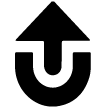The Basics of Starting a Successful Facebook Group – Starting a successful Facebook Group can be a powerful way to build a community, share common interests, or promote a brand. Whether you’re creating a space for like-minded people to discuss a hobby, or looking to grow a business network, following the right steps is key to your group’s growth and engagement. Here’s a guide to help you start a thriving Facebook Group.
1. Define Your Purpose and Audience
Before you create your group, it’s important to know why you’re starting it and who you’re targeting. A clear purpose helps attract the right members and sets the tone for your community.
Questions to Ask:
- What is the main goal of the group?
- Who is your target audience? (e.g., professionals, hobbyists, parents)
- What value will the group provide to members?
Example: If you’re creating a group for small business owners, the goal could be to provide resources, networking opportunities, and support.
2. Choose a Catchy and Descriptive Name
Your group’s name should reflect its purpose and make it easy for potential members to find. A good group name is both clear and engaging.
Tips:
- Keep it short and memorable.
- Include keywords related to your topic to improve visibility in search results.
- Make it unique to stand out from other groups on similar topics.
Example: “Creative Entrepreneurs Network” clearly conveys the focus and audience.
3. Create a Clear Group Description
The group description is your chance to explain what the group is about and what members can expect. Be concise but informative.
What to Include:
- A brief explanation of the group’s purpose.
- The types of discussions or content that will be shared.
- Any rules or guidelines (e.g., be respectful, no self-promotion without permission).
4. Set Privacy Settings
Facebook Groups can be public, closed, or secret. Choose the privacy setting that aligns with your group’s purpose.
Privacy Options:
- Public: Anyone can see the group and its posts.
- Closed: Only members can see the posts, but the group is visible to non-members.
- Secret: The group is invisible to non-members and only those invited can join.
Tip: Closed groups are popular for fostering a sense of community while keeping discussions private.
5. Invite Members and Start Conversations
Once the group is set up, invite people who might be interested. You can start with friends, colleagues, or people you know share the group’s interests.
How to Attract Members:
- Share the group link on your personal profile, in other groups, or relevant online communities.
- Encourage members to invite others who might benefit from the group.
Start by posting engaging content that encourages conversation. Ask questions, share articles, or run a poll to get people involved.
6. Engage Regularly
Consistency is key to keeping your Facebook Group active. As the group leader, you’ll need to post regularly and engage with your members to keep discussions lively.
Engagement Tips:
- Post thought-provoking questions, industry news, or discussion topics.
- Welcome new members with a post to make them feel included.
- Respond to comments and engage in discussions to keep the conversation flowing.
7. Set Clear Rules and Moderate Fairly
Establishing group rules early on helps maintain a positive environment. This can include guidelines about promoting products, respecting others, or staying on topic.
Moderation Tips:
- Be clear about what behavior is acceptable and what’s not.
- Regularly monitor posts to ensure discussions stay respectful.
- Consider adding additional moderators as the group grows.
8. Promote and Grow the Group
As your group gains momentum, continue to promote it to grow your member base. You can:
- Share the group link on your other social media accounts.
- Collaborate with influencers or other groups in your niche.
- Run Facebook Ads targeting people who may be interested in joining.
Final Thoughts
Starting a successful Facebook Group requires a clear vision, consistent engagement, and a welcoming community atmosphere. By following these steps—defining your purpose, creating engaging content, and setting clear rules—you can grow a thriving group that adds value to its members and fosters a strong sense of community.


